Dikey Tarım Projelerimiz

Son zamanlarda sıkça duysak da dünyada yaygın ancak Türkiye’de yeni trend olan, henüz gelişme aşamasında bir girişim olmakla beraber bizim için standart bir seçenek haline gelmiştir.
Türkiye’de ve dünyada hızla yayılan, teknolojisi her geçen gün daha da gelişen dikey tarım neden bu kadar çok sevildi, neden gelecekte dikey tarıma dört elle sarılacağız dersiniz? Dünyada bile henüz küçük çaplı operasyonlara sahip dikey tarımın sandığımızdan da çok yararı var. Şöyle topluca bir bakalım;
-Zaman geçtikçe azalan tarlalarla birlikte artacak gıda ihtiyacı dikey tarımla karşılanabilir.
Sulama Sistemleri
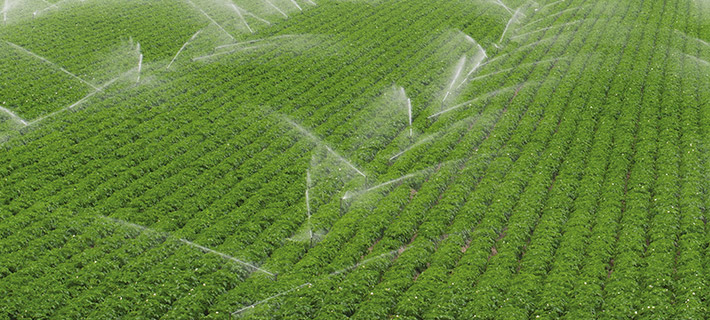
Taşınabilir Sistemler :Pompaj ünitesinin sabit veya taşınabilir olabileceği sistemde ana boru ve laterallere kadar bütün parçalar taşınabilmektedir.Bu sistemler tarla içerisinde farklı noktalara veya bir tarladan diğerine taşınabilmektedir.
Yarı Taşınabilir Sistemler : Toprak içinde ana boruların gömülü olduğu,pompaj ünitesi ve taşınabilir laterallerden oluşan sistemdir.Dünyada en çok yarı taşınabilir yağmurlama sulama sistemi kullanılmaktadır.Özellikle tarla ziraatı,çayır,mera,sebze ve meyve bahçelerinin sulanmasında kullanılmaktadır.
Taşınamayan Sistemler:Pompaj ünitesi, ana boru ve laterallerin sabit olduğu sistemde ana boru ve lateraller toprak altında gömülü durumda olup hiçbir şekilde oynatılmazlar.Taşınamayan sistemler yoğun olarak turunçgiller, meyve bahçeleri ve sürekli çayırlarda kullanılmaktadır.
Rain-fed farming is the natural application of water to the soil through direct rainfall. Relying on rainfall is less likely to result in contamination of food products but is open to water shortages when rainfall is reduced. On the other hand, artificial applications of water increase the risk of contamination.
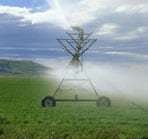
Irrigation is the artificial application of water to the soil through various systems of tubes, pumps, and sprays. Irrigation is usually used in areas where rainfall is irregular or dry times or drought is expected. There are many types of irrigation systems, in which water is supplied to the entire field uniformly. Irrigation water can come from groundwater, through springs or wells, surface water, through rivers, lakes, or reservoirs, or even other sources, such as treated wastewater or desalinated water. As a result, it is critical that farmers protect their agricultural water source to minimize the potential for contamination. As with any groundwater removal, users of irrigation water need to be careful in not pumping groundwater out of an aquifer faster than it is being recharged.
İlaçlama
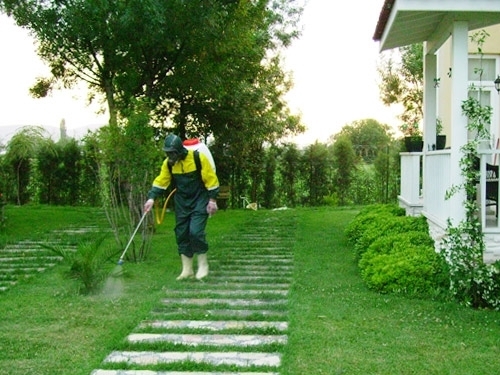
TARIM ÜRÜNLERİNİN MUHAFAZASI VE FÜMİGASYONUN ÖNEMİ
Dünyamızda yaşayan insan topluluklarının gıda ihtiyacı belirlenmiş ve bilinmekte olup insanlar bu ihtiyaçlarını “Tarım ürünleri’’diye isimlen dirilen bitkiler ve hayvanlar aleminde temin etmektedirler. Beslenmekte kullandığımız gıdaların anılan bu alemlerden temini ritmik bir şekilde ve dün yanın güneş etrafındaki harekete bağlı olarak mümkün olabilmektedir. Buna mukabil insanoğlunun gıda ihtiyacı öyle bir ritim takip etmekte, bütün yıl boyunca dünyanın her yerinde ve her gün belli miktarlarda beslenmeleri gerekmektedir. Öte yandan gerek bitkilerin hasat edildikten, gerekse hayvanlar kesildikten kısa bir süre sonra bozulmaya başlarlar. Bu bozulma ile birlikte gıdaların bir kısmından zehirli maddeler ürerken bir kısmının ise besleyici özelliklerinde büyük kayıplar vuku bulmaktadır.
İstediğimiz yer ve zamanda tabii özellikleri bozulmamış gıda tüketebilmemiz için bu bozulmaları yaratan şartları kontrol etmemiz gerekmektedir. İşte gıdaların muhafazası konusu böyle bir ihtiyaçtan kaynaklanmıştır. Gıda muhafazası söz konusu olunca da öncelikle kurutma yöntemi akla gelmektedir, buna soğuk muhafaza, dondurarak, konservasyon, gazterizasyon, fermentasyon, tuzlama, kimyasal muhafaza edicileri ilavesi ile muhafaza ve zirai mücadeleyi de ilave ederek belli başlı muhafaza yöntemlerini belirtmiş oluruz. Diğer taraftan tarlada başarı ile korunan ve yetiştirilen ürünün depolanması sırasında çok iyi korunması gerekmektedir dezenfeksiyon ve diğer klasik mücadelenin yanında veya onların yetersiz kalması halinde ise fümigasyon uygulaması şart olmaktadır.
Türkiye’de yetiştirilen hububatın yaklaşık %21’ini oluşturan 4,5 milyon tonunun, ihraç edilen hububat mamullerinin (un, irmik, makarna gibi) yaklaşık 1 milyon tonu baklagillerin %75’ini oluşturan 950.000 ton, kuru meyvelerin %50’sini oluşturan 250.000-300.000 tonu ve baharat ile yağlı tohumlardan ihraç edilenlerin tümü fümigasyon işlemine tabi tutulmaktadır. Fümigasyonun uygulanması halinde depolarda vuku bulan ürün kaybı ortalama %10-15 olmakta ve güneydoğu illerimizde bu oran %50’ye kadar ulaşabilmektedir.
Gerek tarlada ve gerekse depoda yapılan zirai mücadelenin ülkemiz açısından ekonomik değeri yukarıda belirtilen ürünlerin günümüzdeki parasal değerleri ve kayıp miktarları göz önüne alınarak kolayca bulunabilecektir ve herhalde hiç de küçümsenmeyecektir.
Öte yandan;
“Biz ne yersek böceklerden arta kalanı yeriz” diyen uygulamalı entomolojinin kurucusu Prof. Dr. Escterich’in sözlerini Birleşmiş Milletler Gıda Tarım Örgütü (F.A.O.)’nun eğer böceklerin yedikleri ve tahrip ettikleri miktar gıdayı koruyabilseydik en azından bir kaç yüz milyon insan daha doyurulabilirdi şeklindeki yorumunu da ilave ederek konunun dünya çapındaki önemini de vurgulamış oluruz
Fümigasyonun en büyük özelliği tüm diğer mücadele usul ve ilaçları ile imha imkanı bulunamayan zararlıların bu yöntemle kesinlikle imha edilebilmesidir, zira uygulanan gaz olduğu ve canlıların tümü soluma yaptığı için kurtulması adeta imkansızdır. Ancak insanlar içinde zehirli olan fümigantların kullanılması diğer zirai mücadele metot ve ilaçları ile netice almaması halinde son çare olarak seçilmiştir.
Kısacası Fümigasyon;
- Bulaşık ürüne direkt olarak tatbik edilebilen bir yöntem olması,
- Difizyon yüksekliği nedeniyle üründe uç noktalara kadar nüfuz edebilme ve homojen dağılma imkanı sağlaması,
- Gıda maddelerindeki kalıntı ve koku oranının tolerans sınırı içinde bulunması,
- Kısa sürede büyük miktardaki ürüne uygulanabilme olanağı sağlanması,
- Diğer savaş yöntemlerine oranla daha az masraf ve iş gücü gerektirmesi,
- Zararlı etmenlerin tüm biyolojik dönemlerine etkili olması gibi özellikler yönünden tercih edilmektedir.
Fümigasyonun en çok tatbik edildiği sahalardan bir tanesi de gerek mal ihracı ve gerekse mal ithalatı sırasındaki karantina ilaçlanmasıdır,böylece hem ülkemize giren mal ile çeşitli zararlıların gelmesi önlenmekte hem de alıcı ülkelerin istediği evsafta mal sevk edilebilmektedir.
Yönetmelik: İndir
Happy Children

Biologically, a child (plural: children) is generally a human between the stages of birth and puberty. The legal definition of child generally refers to a minor, otherwise known as a person younger than the age of majority.
Child may also describe a relationship with a parent (such as sons and daughters of any age) or, metaphorically, an authority figure, or signify group membership in a clan, tribe, or religion; it can also signify being strongly affected by a specific time, place, or circumstance, as in “a child of nature” or “a child of the Sixties”.
There are many social issues that affect children, such as childhood education, bullying, child poverty, dysfunctional families and in developing countries, hunger. Children can be raised by parents, in a foster care or similar supervised arrangement, guardians or partially raised in a day care center.
http://en.wikipedia.org/wiki/Child
Joy Celebrating

A goal is a desired result a person or a system envisions, plans and commits to achieve a personal or organizational desired end-point in some sort of assumed development. Many people endeavor to reach goals within a finite time by setting deadlines.
It is roughly similar to purpose or aim, the anticipated result which guides reaction, or an end, which is an object, either a physical object or an abstract object, that has intrinsic value.
Goal-setting ideally involves establishing specific, measurable, attainable, realistic and time-bounded (S.M.A.R.T.) objectives.[citation needed] Work on the goal-setting theory suggests that it can serve as an effective tool for making progress by ensuring that participants have a clear awareness of what they must do to achieve or help achieve an objective. On a personal level, the process of setting goals allows people to specify and then work towards their own objectives most commonly, financial or career-based goals. Goal-setting comprises a major component of personal development.
A goal can be long-term or short-term. The primary difference is the time required to achieve them.
http://en.wikipedia.org/wiki/Goal
Butterfly in Hand
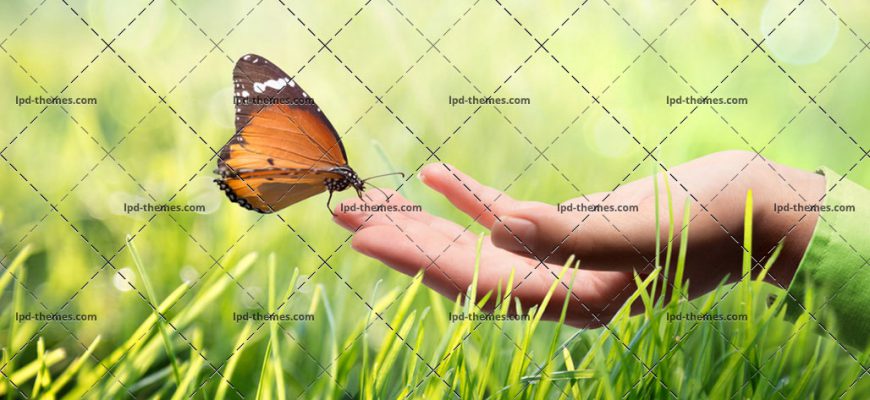
Butterflies are a chiefly diurnal group of the order Lepidoptera (which also includes moths). Adults have large, often brightly coloured wings, and conspicuous, fluttering flight. The group comprise the true butterflies (superfamily Papilionoidea), the skippers (superfamily Hesperioidea) and the moth-butterflies (superfamily Hedyloidea). All the many other families within the Lepidoptera are referred to as moths. The earliest known butterfly fossils date to the mid Eocene epoch, 40–50 million years ago.
Butterflies exhibit polymorphism, mimicry and aposematism. Some, like the Monarch, will migrate over long distances. Some butterflies have evolved symbiotic and parasitic relationships with social insects such as ants. Some species are pests because in their larval stages they can damage domestic crops or trees; however, some species are agents of pollination of some plants, and caterpillars of a few butterflies (e.g., Harvesters) eat harmful insects. Culturally, butterflies are a popular motif in the visual and literary arts.
http://en.wikipedia.org/wiki/Butterfly
Energy Saving

Efficient energy use, sometimes simply called energy efficiency, is the goal to reduce the amount of energy required to provide products and services. For example, insulating a home allows a building to use less heating and cooling energy to achieve and maintain a comfortable temperature. Installing fluorescent lights or natural skylights reduces the amount of energy required to attain the same level of illumination compared with using traditional incandescent light bulbs. Compact fluorescent lights use one-third the energy of incandescent lights and may last 6 to 10 times longer. Improvements in energy efficiency are generally achieved by adopting a more efficient technology or production processes or by application of commonly accepted methods to reduce energy losses.
There are many motivations to improve energy efficiency. Reducing energy use reduces energy costs and may result in a financial cost saving to consumers if the energy savings offset any additional costs of implementing an energy efficient technology. Reducing energy use is also seen as a solution to the problem of reducing carbon dioxide emissions. According to the International Energy Agency, improved energy efficiency in buildings, industrial processes and transportation could reduce the world’s energy needs in 2050 by one third, and help control global emissions of greenhouse gases.
http://en.wikipedia.org/wiki/Efficient_energy_use
Light Bulb
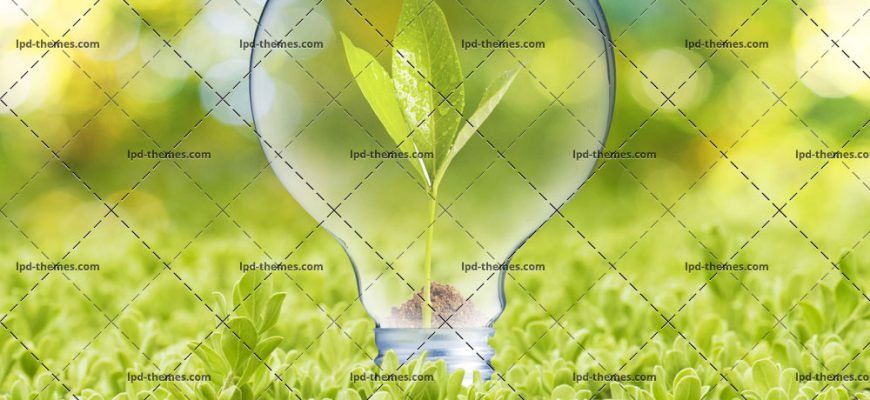
An incandescent light bulb, incandescent lamp or incandescent light globe is an electric light which produces light with a wire filament heated to a high temperature by an electric current passing through it, until it glows (see Incandescence). The hot filament is protected from oxidation with a glass or quartz bulb that is filled with inert gas or evacuated. In a halogen lamp, filament evaporation is prevented by a chemical process that redeposits metal vapor onto the filament, extending its life. The light bulb is supplied with electrical current by feed-through terminals or wires embedded in the glass. Most bulbs are used in a socket which provides mechanical support and electrical connections.
Incandescent bulbs are manufactured in a wide range of sizes, light output, and voltage ratings, from 1.5 volts to about 300 volts. They require no external regulating equipment, have low manufacturing costs, and work equally well on either alternating current or direct current. As a result, the incandescent lamp is widely used in household and commercial lighting, for portable lighting such as table lamps, car headlamps, and flashlights, and for decorative and advertising lighting.
http://en.wikipedia.org/wiki/Incandescent_light_bulb
Wooden Pellets
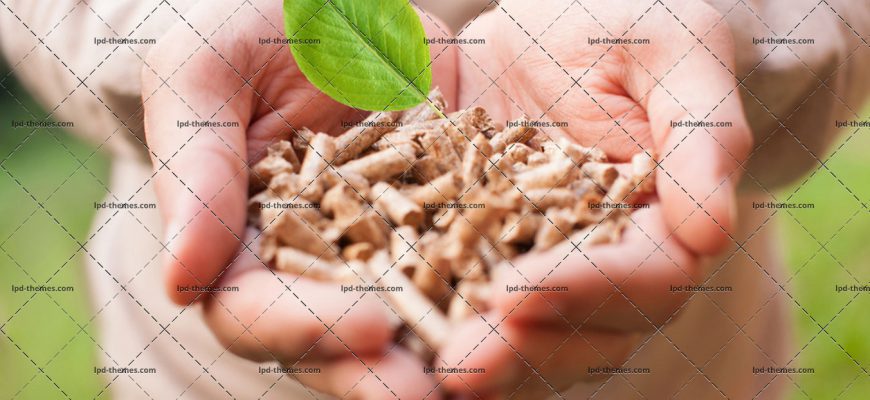
Pellet fuels are heating fuels made from compressed biomass. Wood pellets are the most common type. A form of wood fuel, wood pellets are generally made from compacted sawdust or other wastes from sawmilling and other wood products manufacture,. Other woody biomass sources include palm kernel shell, coconut shell, and whole-tree removal or tree tops and branches leftover after logging and which otherwise help replenish soil nutrients. As well grasses can also be pelletized, creating grass pellets. Pellets are manufactured in several types and grades as fuels for electric power plants, homes, and other applications in between. Pellets are extremely dense and can be produced with a low moisture content (below 10%) that allows them to be burned with a very high combustion efficiency.
Further, their regular geometry and small size allow automatic feeding with very fine calibration. They can be fed to a burner by auger feeding or by pneumatic conveying. Their high density also permits compact storage and rational transport over long distance. They can be conveniently blown from a tanker to a storage bunker or silo on a customer’s premises.
A broad range of pellet stoves, central heating furnaces, and other heating appliances have been developed and marketed since 1993.[citation needed] In 1997 fully automatic wood pellet boilers with similar comfort level as oil and gas boilers became available in Austria. With the surge in the price of fossil fuels since 2005, the demand for pellet heating has increased in Europe and North America, and a sizable industry is emerging. According to the International Energy Agency Task 40, wood pellet production has more than doubled between 2006 and 2010 to over 14 million tons. In a 2012 report, the Biomass Energy Resource Center says that it expects wood pellet production in North America to double again in the next five years.
http://en.wikipedia.org/wiki/Pellet_fuel
Dutch Houses
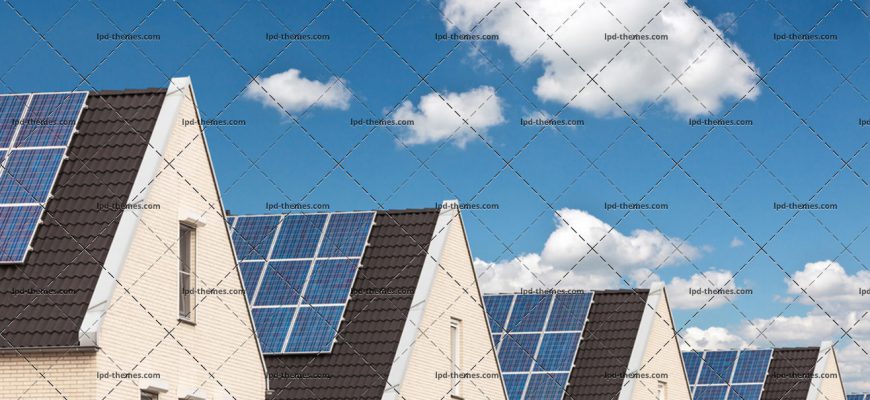
A house is a building that functions as a home for humans or other creatures, including simple dwellings ranging from rudimentary huts of nomadic tribes and complex structures composed of many systems.
The social unit that lives in a house is known as a household. Most commonly, a household is a family unit of some kind, although households may also be other social groups or individuals.
The English word house derives directly from the Old English Hus meaning “dwelling, shelter, home, house,” which in turn derives from Proto-Germanic Khusan (reconstructed by etymological analysis) which is of unknown origin. The house itself gave rise to the letter ‘B’ through an early Proto-Semitic hieroglyphic symbol depicting a house. The symbol was called “bayt”, “bet” or “beth” in various related languages, and became beta, the Greek letter, before it was used by the Romans.
http://en.wikipedia.org/wiki/House


Son yorumlar